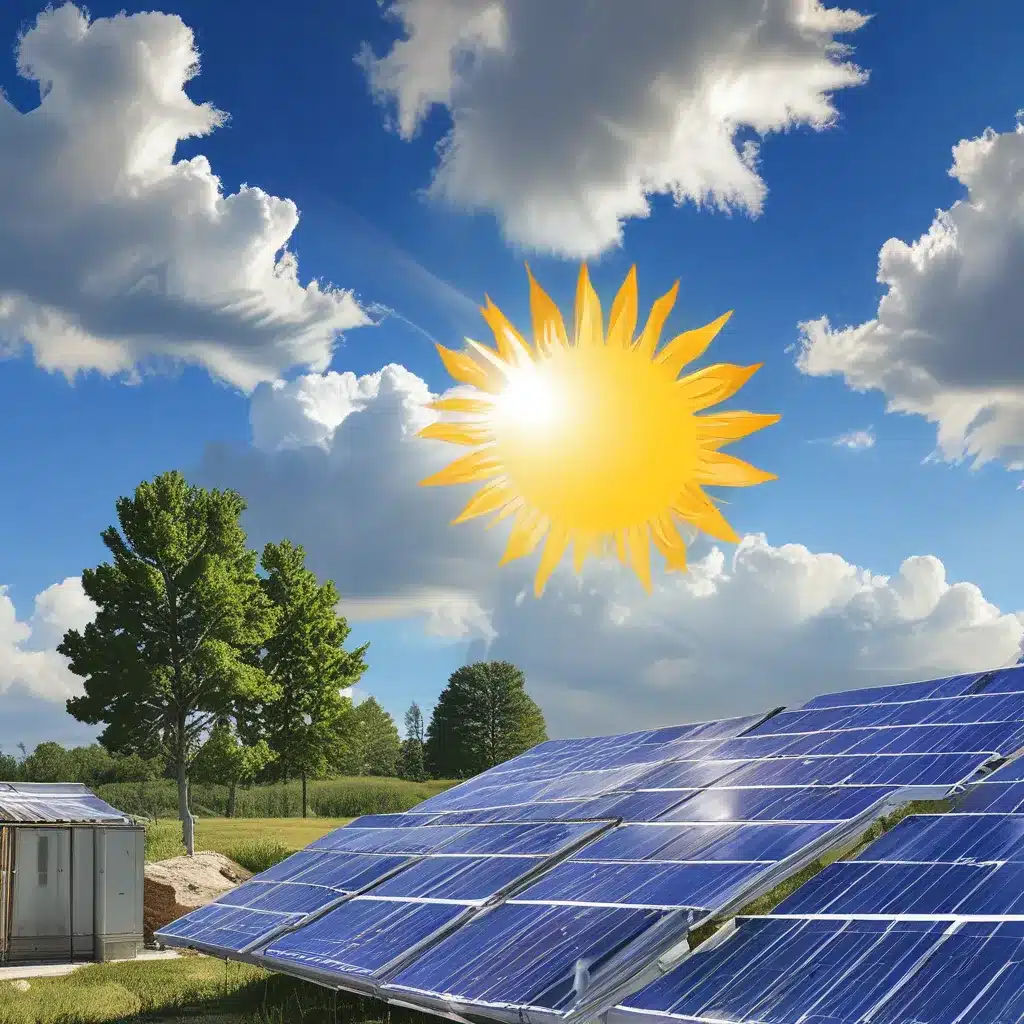
Embracing the Power of the Sun: How Solar Energy is Transforming Our Planet
As the sun rises each morning, casting its warm glow across the landscape, I can’t help but feel a sense of awe and wonder at the incredible power that lies in those radiant beams. You see, I’m not just a casual observer of the sun’s beauty – I’m a passionate advocate for harnessing that energy to create a cleaner, more sustainable future for our planet.
For years, I’ve been captivated by the remarkable environmental benefits of solar energy, and I’m thrilled to share my insights with you. Join me on a journey as we explore how this renewable powerhouse is revolutionizing the way we think about energy, and how it’s playing a crucial role in protecting our precious ecosystems.
Reducing Greenhouse Gas Emissions: The Solar Solution
Let’s start with the big picture – the fight against climate change. As we all know, the burning of fossil fuels has been a significant contributor to the alarming rise in greenhouse gas emissions, leading to global warming and widespread environmental damage. But here’s where solar energy steps in as the hero of the story.
According to the U.S. Department of Energy, solar energy has an important role to play in reducing these harmful emissions and mitigating the effects of climate change. By tapping into the boundless energy of the sun, we can generate clean, renewable electricity without the polluting byproducts of fossil fuels. It’s like exchanging a dirty old car for a sleek, zero-emission electric vehicle – the difference is night and day.
But the benefits don’t stop there. Solar energy can also improve air quality by reducing the release of particulate matter and other airborne pollutants that can have devastating effects on human health and fragile ecosystems. Imagine breathing in crisp, fresh air instead of smog-filled smog – it’s a game-changer for our well-being and the well-being of the natural world around us.
Conserving Water: The Unsung Benefit of Solar Energy
Water is the lifeblood of our planet, and its conservation is crucial for the survival of both human and animal populations. Now, here’s where solar energy steps up to the plate again, delivering a surprising environmental benefit.
Compared to traditional power plants that rely on fossil fuels or nuclear energy, solar energy production requires significantly less water. This is a game-changer, especially in regions where water scarcity is a pressing issue. Instead of guzzling down millions of gallons of precious water to generate electricity, solar panels can harness the sun’s energy without putting a strain on our water resources.
It’s like having a magic wand that can create energy without depleting our most vital natural resource. Imagine the positive impact this can have on fragile ecosystems and drought-stricken communities. Solar energy is truly a water-wise wonder that can help us preserve this precious commodity for generations to come.
Providing Ecosystem Services: Solar’s Hidden Superpowers
But the environmental benefits of solar energy don’t stop at reducing emissions and conserving water. According to the U.S. Department of Energy, solar installations can also provide valuable ecosystem services, such as carbon sequestration, pollination, and improved ground and stormwater management.
Just picture a vast solar farm, its sleek panels glinting in the sun, not only generating clean electricity but also serving as a haven for pollinators like bees and butterflies. Or imagine a rooftop solar array not only powering a home but also helping to manage stormwater runoff and prevent soil erosion.
It’s like solar energy has superpowers that go beyond just producing electricity. It’s a multifaceted environmental hero, delivering a host of benefits that can support the health and resilience of the ecosystems we depend on.
Balancing Solar Development and Environmental Protection
Of course, as with any form of energy development, there are potential impacts to consider when it comes to solar energy. The U.S. Department of Energy notes that ground-mounted photovoltaic (PV) and concentrating solar-thermal power (CSP) installations require the use of land, and site selection, design, and management strategies are crucial to minimizing impacts on local wildlife, habitats, and natural resources.
This is where the role of solar developers, regulators, and communities becomes paramount. By working together, they can identify strategies and technologies that can avoid or minimize adverse impacts and maximize the environmental benefits of solar energy. This might include selecting sites that have minimal impact on sensitive ecosystems, implementing wildlife-friendly design features, or even exploring ways to integrate solar installations with agricultural practices.
It’s all about finding that delicate balance – harnessing the power of the sun to create a cleaner, more sustainable future, while also safeguarding the natural world that we all depend on. And with the continued support and collaboration of all stakeholders, I believe we can achieve that goal.
Embracing a Brighter, Greener Future with Solar Energy
As I look out at the sun-drenched landscape, I can’t help but feel a sense of hope and optimism for the future. Solar energy is not just a technological marvel – it’s a powerful ally in the fight to protect our planet and its precious ecosystems.
By embracing the environmental benefits of solar energy, we can reduce our carbon footprint, conserve our water resources, and support the health of our natural habitats. It’s a win-win-win situation that can transform the way we think about energy and our relationship with the world around us.
So, let’s join together and harness the power of the sun to create a brighter, greener future for all. Solar As Systems Inc. is leading the charge, and I’m proud to be a part of this movement towards a more sustainable and eco-friendly world. The future is looking brighter than ever, and I can’t wait to see what we can accomplish with the help of this incredible renewable energy source.


